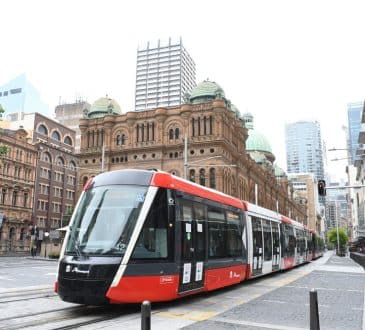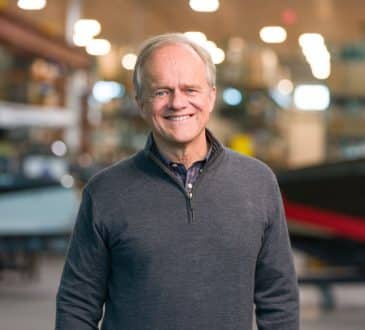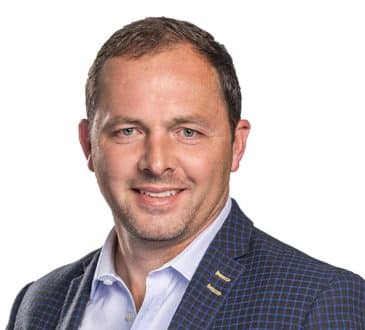CEO Spotlight: Electroimpact CEO Peter Zieve Disrupts the Field of Aviation Manufacturing Industry with the Innovative AFP 4.0 System

Will the AFP4.0 result in a major shift for the field of aviation manufacturing? As Electroimpact CEO and the inventor of this new system, I am confident this new, revolutionary system will make waves for years to come.
I established Electroimpact more than 35 years ago, shortly after earning my Ph.D. in Mechanical Engineering at the University of Washington.
Upon founding the firm, I made it my first priority to prepare my low voltage electromagnetic riveting technology, an innovation I developed during doctoral research, for commercial application.
From the start, I pictured Electroimpact as a refuge for engineers, a place where engineering professionals would be free to innovate and would be the driving force behind the firm’s innovative and commercial success.
I created Electroimpact to ensure engineers not only had a haven for professional development and innovation, but as a place where engineering staff took a hands-on approach in each phase of the project. It is this model that has positioned both Electroimpact and my team firmly at the top of the satellite and aircraft manufacturing field.
Disrupting Aviation Manufacturing, Empowering Change and Innovation
Up to this point, the field of aviation manufacturing has been under the foot of only a small number of sizable corporations. This is mainly due to the high costs of capital and the many difficult barriers other firms must overcome to enter the market.
Quite simply, manufacturing airplane components and assembling airplanes is extremely expensive. However, I believe that my company’s revolutionary AFP4.0 manufacturing system could disrupt the aviation manufacturing industry.
The AFP4.0 greatly lowers capital investment costs, which in turn makes it cheaper to manufacture certain aircraft components, in this case, the airframes themselves. With the AFP4.0, you can manufacture airframes in smaller spaces and with less equipment without compromising the airframes themselves.
As the innovator behind the AFP4.0 system, I know it can be set up in small warehouses or large garages. Instead of needing tens of thousands of feet of floor space and multiple pieces of expensive equipment, you need only a few machines and limited space.
The AFP4.0 system has been designed from the ground up to allow smaller manufacturers to enter the airplane manufacturing industry. We focused on lowering capital investments so that we can encourage more players to enter the market. This, in turn, could drive innovation and competition, which is good for airplane manufacturers and customers alike.
Improved Productivity with Minimal Adaptation
The AFP4.0 system is also easy to use with minimal intervention and reworking needed. Quite simply, the AFP4.0 system often gets the job done right the first time. The AFP4.0 system can ultimately increase productivity nearly 8-fold.
Productivity per employee may greatly increase with the AFP4.0 system, allowing even small operations to quickly achieve greater productivity. Lower utility costs also help lower overall production costs.
In the past, airframe manufacturing typically required large production facilities, multiple machines, and a large staff. If you didn’t have the resources to build all of that from the ground up, you’d struggle to break into the industry. The AFP4.0 system changes the dynamic.
AFP4.0’s High Efficiency and Reliability
The AFP4.0 system isn’t simply small and cheap. While those metrics are important, so too are quality and reliability. The production standards required in the aviation industry are sky-high, but the AFP4.0 system can reliably hit even the most stringent quality standards without manual intervention.
The AFP4.0 system can achieve the high-quality standards required in aviation 99+ percent of the time without any manual intervention. Not only that, but it’s a reliable system too, with less than one process error per maintenance intervention.
The AFP4.0 system also offers high performance, with lamination time reduced by a factor of 2. Depending on the part, utilization gains also increase significantly.
Want to learn more? Check out this brief bio or visit Electroimpact to learn about our latest pursuits today.
Bring the best of the CEOWORLD magazine's global journalism to audiences in the United States and around the world. - Add CEOWORLD magazine to your Google News feed.
Follow CEOWORLD magazine headlines on: Google News, LinkedIn, Twitter, and Facebook.
Copyright 2025 The CEOWORLD magazine. All rights reserved. This material (and any extract from it) must not be copied, redistributed or placed on any website, without CEOWORLD magazine' prior written consent. For media queries, please contact: info@ceoworld.biz








